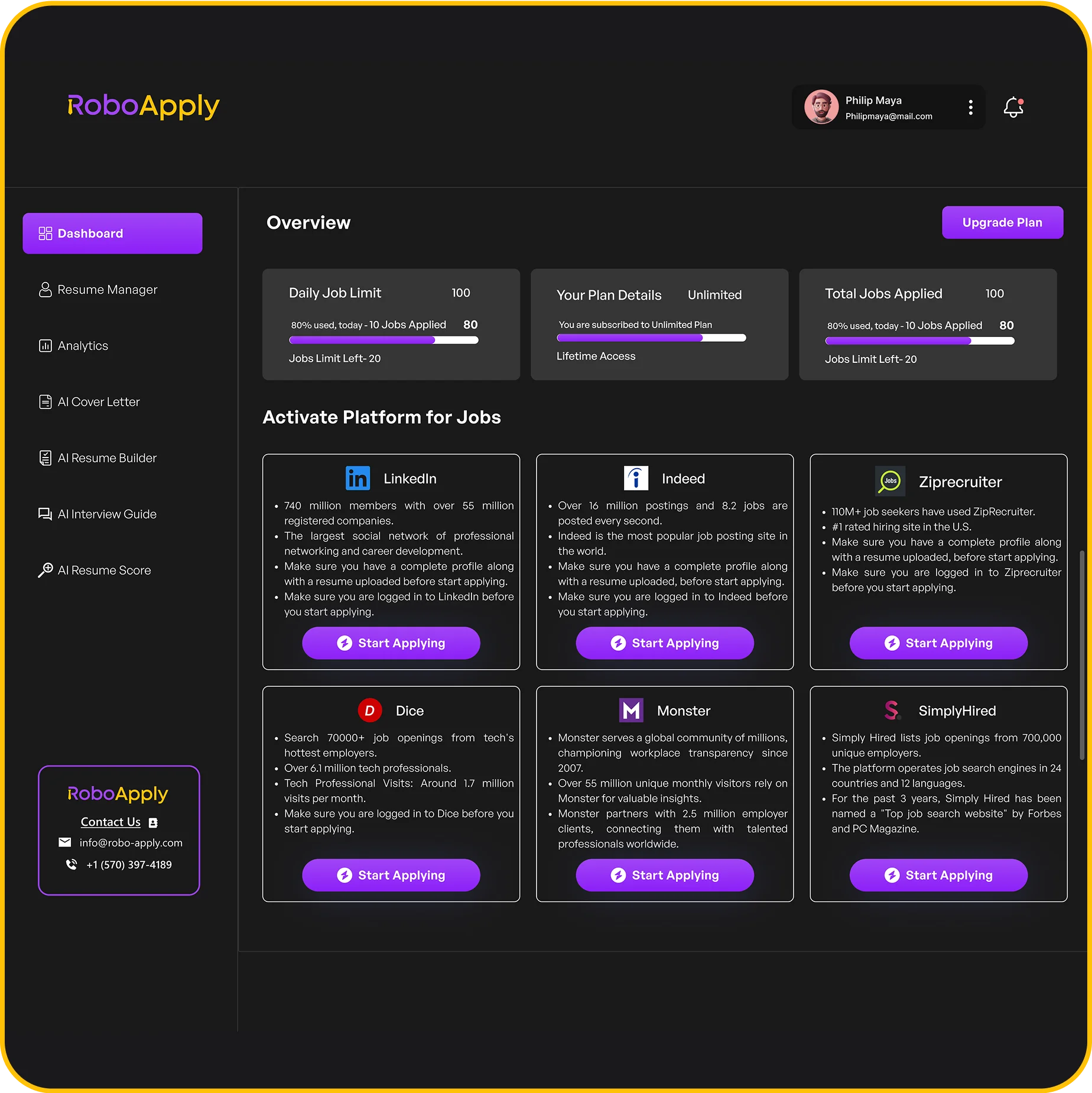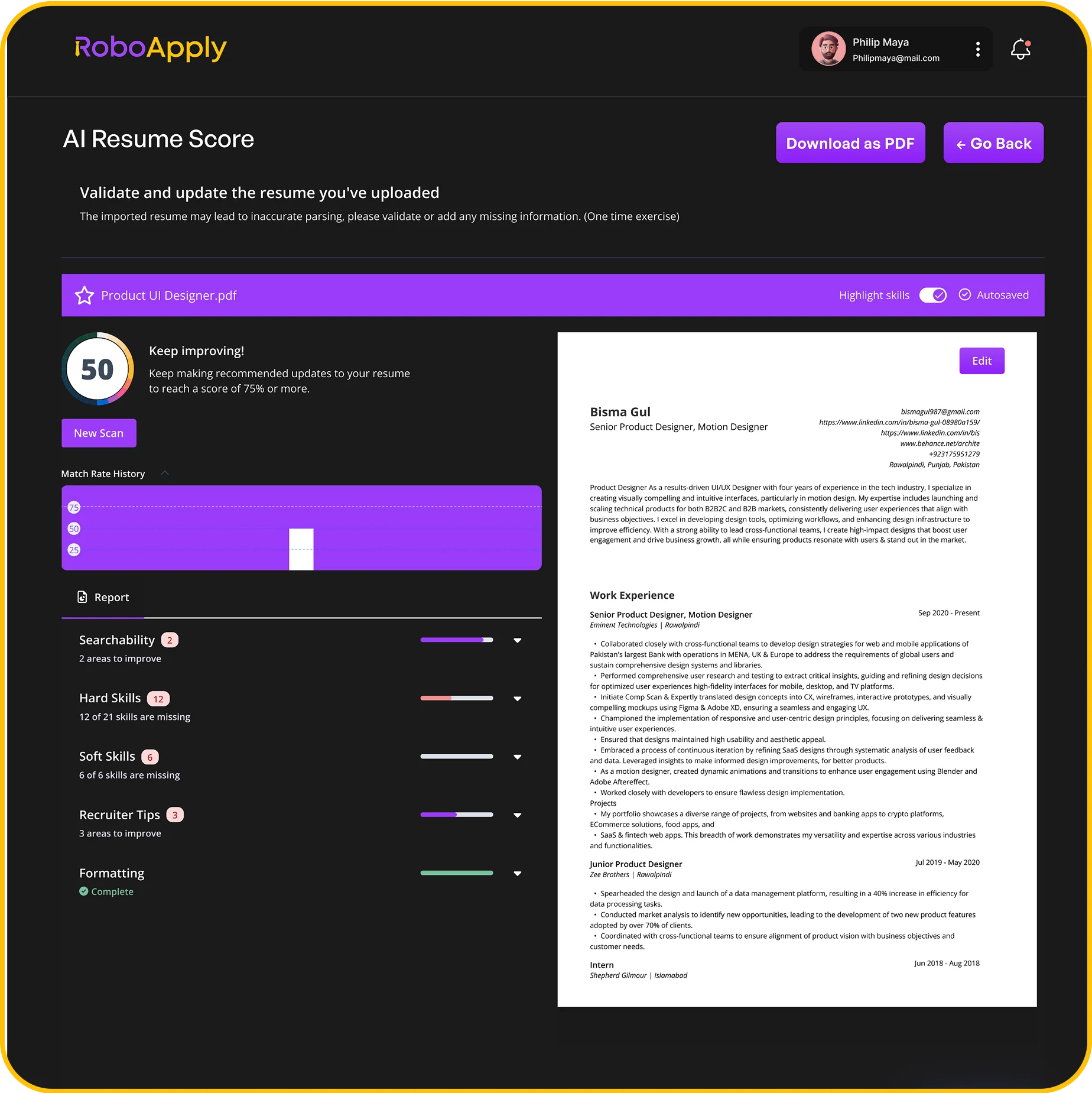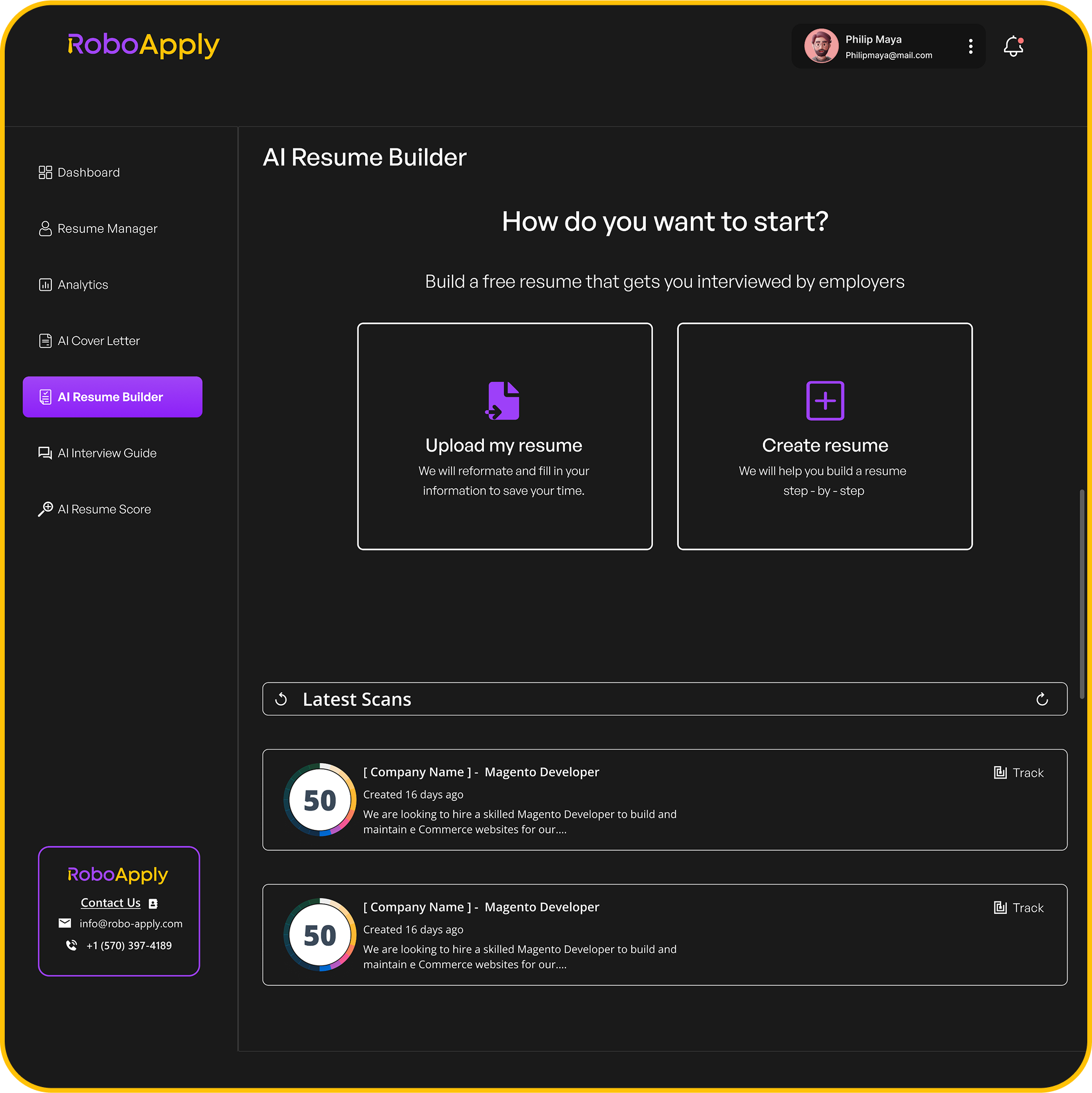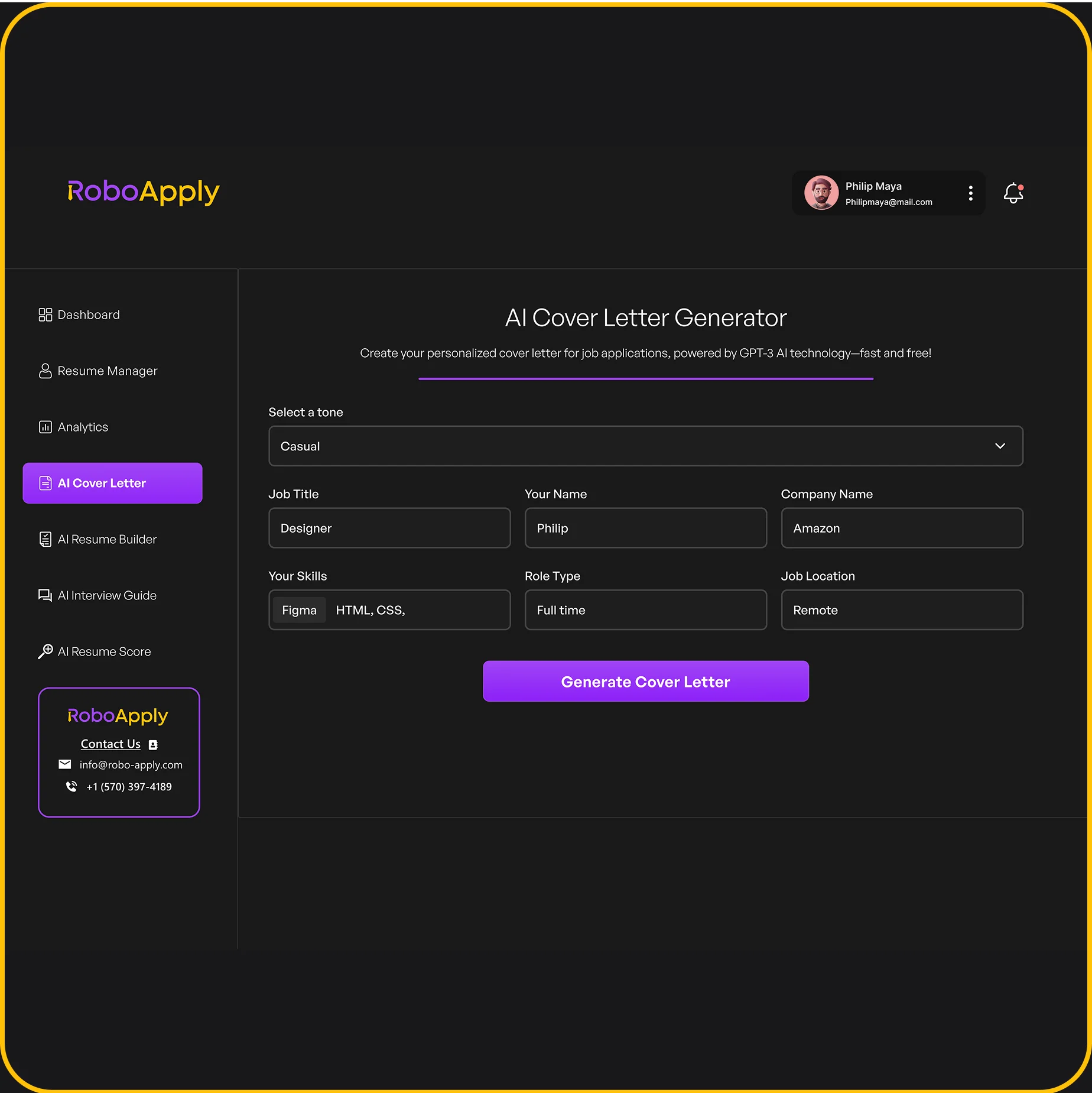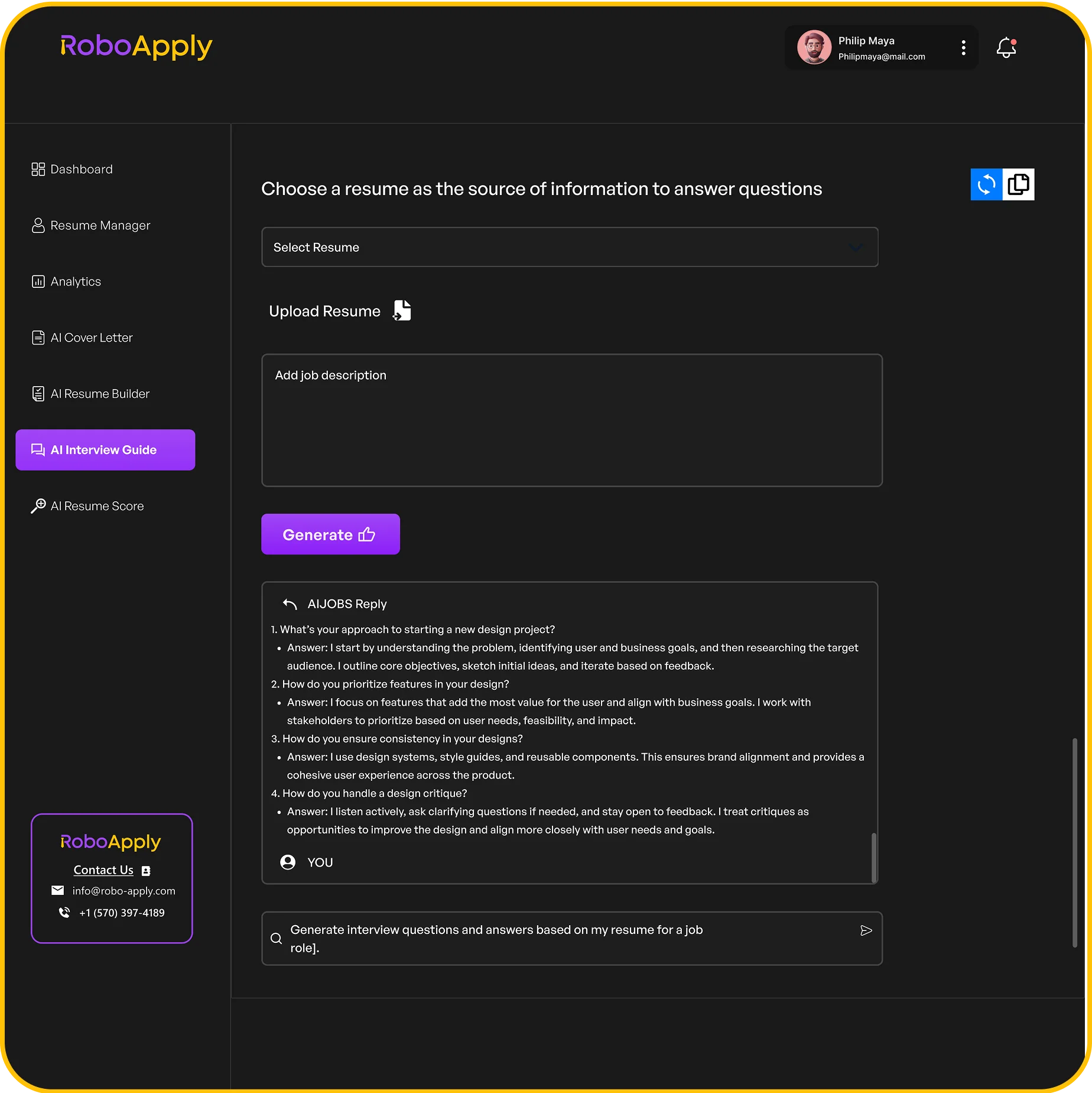1. Platform Engineer
Platform Engineers are the backbone of any tech company. They design, build, and maintain the infrastructure that keeps everything running smoothly. Think of them as the architects and builders of the digital world. A good platform engineer resume needs to show you can handle the pressure and deliver reliable systems. Let’s get into it.
Platform engineers are vital for ensuring applications run smoothly, especially in sectors where system crashes can cause significant disruptions. They focus on optimizing software and infrastructure to enhance user experience and system reliability.
Here’s what you need to focus on:
- Highlight your experience with cloud platforms. This is huge. Show you know your way around AWS, Azure, or Google Cloud.
- Showcase your skills with container orchestration tools like Kubernetes or Docker Swarm. These are essential for modern deployments.
- Demonstrate your knowledge of CI/CD pipelines. Everyone wants faster, more reliable deployments.
Platform engineers need to be constantly learning and adapting to new technologies. A platform engineer resume should reflect this commitment to continuous improvement.
Here are some things to include in your resume:
- Certifications: AWS Certified Solutions Architect, Google Cloud Certified – Professional Cloud DevOps Engineer, etc.
- Collaboration Skills: Show how you’ve worked with other teams to achieve common goals.
- Leadership Experience: If you’ve led a team, make sure to highlight that.
Don’t just list skills; provide specific examples of how you’ve used them to solve problems and improve systems. For example, instead of saying "Strong collaboration skills," say "Collaborated with the security team to implement a comprehensive security monitoring solution, ensuring compliance with industry standards."
Think about it this way: you’re not just applying for a job; you’re showcasing your ability to build and maintain the foundation upon which everything else is built. Make sure your resume reflects that.
2. DevOps Platform Engineer
DevOps Platform Engineers are all about streamlining the software development lifecycle. They build and maintain the platforms that developers use to build, test, and deploy code. It’s a mix of development and operations, hence the name. Let’s look at what makes a good resume for this role.
Header
Your header should be clear and concise. Include your name, contact information (phone number, email), and a link to your LinkedIn profile. Make sure your email address looks professional – no old embarrassing nicknames! A good header makes it easy for recruiters to reach out. For example:
John Doe
(123) 456-7890 | john.doe@email.com | linkedin.com/in/johndoe
Summary
A strong summary is essential. It’s your chance to make a first impression. Keep it short (2-3 sentences) and highlight your key skills and experience. Tailor it to the specific job you’re applying for. Here’s an example:
DevOps Platform Engineer with 5+ years of experience in building and maintaining CI/CD pipelines. Proficient in AWS, Kubernetes, and Terraform. Passionate about automating processes and improving developer productivity.
Experience
This is where you showcase your accomplishments. Use action verbs to describe your responsibilities and quantify your results whenever possible. Focus on the impact you made in previous roles. For example:
- Designed and implemented a new CI/CD pipeline using Jenkins and Kubernetes, reducing deployment time by 40%.
- Automated infrastructure provisioning using Terraform, resulting in a 30% reduction in infrastructure costs.
- Developed and maintained monitoring dashboards using Prometheus and Grafana, improving system uptime by 99.9%.
Education
List your degrees, certifications, and relevant coursework. If you have a degree in Computer Science or a related field, highlight it. Also, include any relevant certifications, such as AWS Certified DevOps Engineer or Google Cloud Certified Professional Cloud Architect. Don’t include irrelevant or outdated certifications that don’t apply to the Platform Engineer role. Here’s an example:
Bachelor of Science in Computer Science, University of Example, 2018
AWS Certified DevOps Engineer – Professional
Skills
The skills section is a key part of your DevOps Platform Engineer resume. It’s where you showcase your technical abilities and expertise to potential employers. When writing this section, focus on highlighting the most relevant and in-demand skills for the role. Here are some skills you can include on your DevOps Platform Engineer resume:
- Cloud Platforms: AWS, Azure, Google Cloud
- Containerization: Docker, Kubernetes
- Infrastructure as Code: Terraform, Ansible
- CI/CD: Jenkins, GitLab CI
- Programming Languages: Python, Bash
Keywords
Use keywords from the job description throughout your resume. This helps your resume get past Applicant Tracking Systems (ATS). Some common keywords for DevOps Platform Engineers include:
- Automation
- Cloud
- CI/CD
- Infrastructure as Code
- DevOps
Action Verbs
Use strong action verbs to describe your accomplishments. Here are some examples:
- Developed
- Implemented
- Automated
- Managed
- Designed
- Optimized
Cloud Platforms
Highlight your experience with different cloud platforms. Be specific about the services you’ve used and the projects you’ve completed. For example:
- AWS: EC2, S3, Lambda, ECS, EKS
- Azure: Virtual Machines, Blob Storage, Functions, AKS
- Google Cloud: Compute Engine, Cloud Storage, Cloud Functions, GKE
Remember to tailor your resume to each specific job you apply for. Highlight the skills and experience that are most relevant to the position. Good luck!
3. Header
Your resume header is prime real estate. It’s the first thing recruiters see, so make it count. It needs to be clear, concise, and easy to read. Think of it as your professional introduction.
Essential Information
- Full Name: Use a professional font and a slightly larger size than the rest of the document. Avoid nicknames.
- Phone Number: Make sure it’s a number where you can be easily reached. Double-check for typos!
- Email Address: Use a professional-sounding email. No one wants to hire
partyanimal@email.com. Consider using your name or initials. - LinkedIn Profile URL: Include a direct link to your LinkedIn profile. This allows recruiters to quickly learn more about your experience and connections.
- Location: List your city and state. You don’t need to include your full street address for privacy reasons. Listing your location helps recruiters understand if you’re local or willing to relocate.
Optional Information
- Portfolio/Personal Website: If you have a portfolio showcasing your platform engineering projects, definitely include a link. This is especially useful if you’ve contributed to open-source projects or have personal projects that demonstrate your skills.
- GitHub Profile: Similar to a portfolio, a GitHub profile shows your coding abilities and contributions. Make sure your repositories are well-organized and showcase your best work.
- Professional Title: You can include a brief title under your name, such as "Platform Engineer" or "DevOps Platform Engineer". This helps clarify your role and target job.
Keep your header clean and uncluttered. Avoid adding unnecessary information like your date of birth or a photo (unless it’s standard practice in your industry or location). The goal is to make it easy for recruiters to quickly find your contact information and assess your qualifications. A well-formatted resume header can make a big difference.
Example
John Smith
(123) 456-7890 | john.smith@email.com
LinkedIn: linkedin.com/in/johnsmith | GitHub: github.com/johnsmith
San Francisco, CA
Tips for a Standout Header
- Use a professional font: Choose a font that is easy to read and visually appealing. Common choices include Arial, Calibri, and Times New Roman.
- Keep it concise: Avoid long sentences or paragraphs. The header should be a quick summary of your contact information.
- Make it visually appealing: Use formatting to highlight key information, such as bolding your name or using a slightly larger font size.
- Ensure it’s ATS-friendly: Applicant Tracking Systems (ATS) scan resumes for keywords and information. Make sure your header is easily readable by these systems. Avoid using images or unusual formatting that might confuse the ATS. A good platform engineer resume is ATS-friendly.
- Proofread carefully: Typos and errors can make a bad impression. Double-check your header for any mistakes before submitting your resume.
4. Summary
Your summary is the first thing recruiters see, so make it count! It’s your chance to quickly show why you’re the right person for the job. Think of it as your elevator pitch – short, sweet, and to the point. Focus on your biggest achievements and skills that match what the job description is asking for.
Here’s how to make your summary shine:
- Start with a strong adjective: "Results-driven," "Innovative," or "Experienced" are good choices.
- Mention your years of experience: This gives the hiring manager a quick idea of your seniority.
- Highlight your key skills: List the skills that are most relevant to the job. For example, if you’re applying for a cloud platform engineer role, mention your experience with AWS, Azure, or GCP.
- Quantify your achievements: Use numbers to show the impact you’ve made in previous roles. Did you reduce infrastructure costs by 20%? Did you improve system uptime by 15%? These numbers make your accomplishments more tangible.
A good summary isn’t just a list of skills; it tells a story about what you can do for the company. It should grab the reader’s attention and make them want to learn more about you. Tailor it to each job you apply for, and you’ll be well on your way to landing an interview. Make sure to check out these resume examples for inspiration.
Here’s an example of a strong summary:
"Results-driven Platform Engineer with 7+ years of experience in designing, building, and maintaining scalable and reliable infrastructure. Proven ability to reduce infrastructure costs by 25% and improve system uptime by 15%. Expertise in AWS, Kubernetes, and Terraform. Passionate about automating processes and improving developer productivity."
Another example:
"Innovative DevOps Platform Engineer with 5+ years of experience in automating software delivery pipelines and improving system reliability. Skilled in using tools like Jenkins, Docker, and Ansible to streamline development workflows. Strong track record of collaborating with cross-functional teams to deliver high-quality software on time and within budget. Seeking a challenging role where I can use my skills to help a company achieve its business goals. Check out these software engineer resume examples for more ideas."
5. Experience
Your experience section is where you show, not just tell, what you’ve done. It’s more than just listing job titles; it’s about highlighting your accomplishments and how you’ve contributed to previous roles. Think of it as your chance to prove you have the skills and experience they’re looking for. Let’s break down how to make this section shine.
Example 1: Platform Engineer at Tech Solutions Inc.
Platform Engineer | Tech Solutions Inc. | June 2020 – Present
- Designed and implemented a new CI/CD pipeline tech resume examples using Jenkins and Kubernetes, reducing deployment time by 40%.
- Automated infrastructure provisioning with Terraform and Ansible, resulting in a 25% reduction in infrastructure costs.
- Developed and maintained monitoring solutions using Prometheus and Grafana, improving system uptime by 15%.
- Collaborated with development teams to improve application performance and scalability.
I once spent a whole week debugging a deployment issue that turned out to be a simple configuration error. It taught me the importance of thorough testing and documentation. Now, I always make sure to double-check everything before pushing changes to production.
Example 2: DevOps Engineer at Cloud Services Ltd.
DevOps Engineer | Cloud Services Ltd. | January 2018 – June 2020
- Managed and maintained cloud infrastructure on AWS, ensuring high availability and scalability.
- Implemented infrastructure as code using CloudFormation, enabling consistent and repeatable deployments.
- Developed and maintained automated testing frameworks, improving software quality and reducing bugs.
- Participated in on-call rotations, resolving production incidents and minimizing downtime.
Tips for Writing Your Experience Section
- Quantify your achievements: Use numbers and metrics to show the impact of your work. For example, instead of saying "Improved deployment process," say "Reduced deployment time by 40% using Jenkins and Kubernetes."
- Use action verbs: Start each bullet point with a strong action verb to describe what you did. See the action verbs section for a list of good verbs to use.
- Tailor to the job description: Read the job description carefully and highlight the skills and experience that are most relevant to the role. Use keywords from the job description in your experience section.
- Focus on results: Don’t just list your responsibilities; focus on the results you achieved. What problems did you solve? How did you make things better? What was the impact of your work?
- Be specific: Provide specific examples of your work and the technologies you used. Avoid vague statements and generalities. For example, instead of saying "Experienced with cloud technologies," say "Managed and maintained cloud infrastructure on AWS using EC2, S3, and Lambda."
Example Table: Quantifying Achievements
| Achievement | Metric | Description |
6. Education
Your education section is where you list your degrees and any relevant coursework. It’s pretty straightforward, but there are a few things to keep in mind to make it shine.
What to Include
- Degree Name: Be specific. Instead of just "Engineering," list "Bachelor of Science in Computer Engineering."
- University Name: Include the full name of the institution.
- Graduation Date (or Expected Graduation Date): If you haven’t graduated yet, that’s totally fine. Just put your expected date.
- GPA (Optional): Only include if it’s above 3.5. Otherwise, leave it off.
- Relevant Coursework: List courses that directly relate to platform engineering, like cloud computing, systems administration, or DevOps.
Example
University of Texas, Austin
Bachelor of Science in Computer Science, May 2023
GPA: 3.8
Relevant Coursework: Data Structures and Algorithms, Operating Systems, Cloud Computing, Database Management
Tips
- Order Matters: List your degrees in reverse chronological order (most recent first).
- Be Consistent: Use the same formatting for each entry.
- Keep it Concise: No need to write paragraphs. Just the key details.
- Tailor It: If you’re short on experience, you can expand on relevant projects or coursework. Otherwise, keep it brief.
If you have multiple degrees, make sure to list them all. If you have certifications that are relevant to platform engineering, you can include those here as well, or in a separate certifications section. The goal is to show that you have the foundational knowledge needed to succeed in the role. Think about adding your coding skills to show off your abilities.
Advanced Degrees
If you have a Master’s or Ph.D., definitely include it. These can really set you apart. For example:
Stanford University
Master of Science in Computer Science, June 2025
Thesis: Scalable Infrastructure for Machine Learning
In this case, the thesis topic is super relevant and shows specialized knowledge. Don’t forget to tailor your engineering intern resume to the job description.
7. Skills
When it comes to your platform engineer resume, the skills section is super important. It’s where you show off what you can actually do. Don’t just list a bunch of random technologies; tailor it to the specific job you’re applying for. Think of it as your chance to prove you’re the right person for the job.
Here’s the deal: you want to include both hard skills (technical abilities) and soft skills (personal traits). Hard skills are things like knowing specific programming languages or cloud platforms. Soft skills are things like problem-solving and communication. Both are important, so don’t neglect either one.
- Hard Skills: These are the technical abilities you need to do the job. Think programming languages, cloud platforms, and specific tools.
- Soft Skills: These are the personal traits that make you good to work with. Think communication, problem-solving, and teamwork.
- Tailor Your Skills: Don’t just list every skill you have. Focus on the ones that are most relevant to the job description. This shows you’ve read the job description and understand what they’re looking for.
It’s a good idea to quantify your skills whenever possible. Instead of just saying you know Python, say you have "5+ years of experience developing Python-based applications." This gives the hiring manager a better sense of your skill level.
Here are some skills to consider including on your resume. Make sure to check out entry-level software engineer resume examples to see how these skills are presented in real resumes.
- Programming Languages: Python, Java, Go, C++, JavaScript
- Cloud Platforms: AWS, Azure, GCP
- DevOps Tools: Docker, Kubernetes, Terraform, Ansible
- Operating Systems: Linux, Windows
- Databases: SQL, NoSQL
Remember, the goal is to show that you have the skills and experience to be a successful platform engineer. So, take the time to craft a skills section that is both informative and compelling. You can also find more essential resume skills to add to your resume.
8. Keywords
Keywords are super important. They’re what Applicant Tracking Systems (ATS) use to filter resumes. Think of them as the gatekeepers to your dream job. Using the right ones can dramatically increase your chances of getting past the initial screening.
It’s all about relevance.
Here’s the deal:
- Cloud Technologies: AWS, Azure, Google Cloud Platform (GCP), Kubernetes, Docker. These are practically table stakes now. If you’ve got experience, flaunt it.
- Automation Tools: Ansible, Terraform, Chef, Puppet. Show you can automate infrastructure like a boss.
- CI/CD: Jenkins, GitLab CI, CircleCI, Travis CI. Continuous Integration and Continuous Delivery are key to modern development.
- Monitoring & Logging: Prometheus, Grafana, ELK Stack (Elasticsearch, Logstash, Kibana), Splunk. Prove you can keep an eye on things and troubleshoot effectively.
- Scripting Languages: Python, Bash, Go. Being able to script is a huge plus for automating tasks and managing infrastructure.
Make sure your resume includes keywords that match the job description. If the job posting mentions "AWS Lambda," make sure "AWS Lambda" is on your resume. It sounds obvious, but it’s easy to miss. Tailor your resume for each application.
Think about it this way: if you’re applying for a DevOps Platform Engineer role, you’ll want to highlight your DevOps Platform Engineer Skills & Keywords. If you’re aiming for a more general software engineer position, focus on core programming languages and system design principles. It’s all about matching your skills to what the employer is looking for. And remember, a well-optimized resume can significantly improve your chances of landing an interview. Consider using a Targeted Resume tool to ensure you’re hitting all the right notes.
9. Action Verbs
Your platform engineering resume needs to show how you used your tech skills to make things better at your company. Did you help create a new system that saved time or improved how things worked? That’s what employers want to see.
Using strong action verbs is key to making your resume stand out. Instead of saying you "worked on" something, show what you actually did. Let’s look at some examples.
- Automated: "Automated the deployment process using Jenkins, reducing manual intervention by 90%"
- Implemented: "Implemented a highly available Kubernetes cluster, ensuring 99.99% uptime for critical applications"
- Optimized: "Optimized CI/CD pipelines, cutting build times by 50% and enabling faster time-to-market"
- Designed: "Designed a scalable infrastructure on AWS using EC2, ECS, and RDS, supporting 10x traffic growth"
Here are some action verbs that are both technical and proactive. They can be used to highlight the progress you have done in your past experiences that can help you land the next job. Make sure not to repeat the same word twice on your resume.
- Tested
- Developed
- Troubleshooted
- Coded
- Computed
- Automated
- Discovered
- Diagnosed
- Validated
- Restructured
- Debugged
- Installed
It’s a good idea to quantify your achievements whenever possible. For example, instead of saying you "improved system performance," say you "reduced latency by 15%" or "increased processing speeds by 20%." Metrics speak volumes!
To show you have built or improved software, use engineered, built, implemented, enhanced. To show problem-solving skills, use troubleshooted, resolved, debugged, refined, reworked. To show you can make software more efficient, use optimized, streamlined, refactored, revised, consolidated. To show you can lead projects, use coordinated, managed, oversaw, directed, supervised. To show you can work with others, use collaborated, partnered, mentored, supported, integrated. For more ideas, check out synonyms for common action verbs like work experience, built, executed, increased, assisted.
10. Cloud Platforms
Cloud platforms are super important for platform engineers. You’ve gotta show you know your way around them. Let’s look at some of the big ones.
AWS (Amazon Web Services)
AWS is like the granddaddy of cloud platforms. It’s got everything from compute to databases to AI. If you’ve worked with AWS, make sure to highlight specific services you’ve used, like EC2, S3, Lambda, or ECS. Don’t just say you "used AWS;" tell them what you did with it. For example:
- Managed infrastructure using CloudFormation and Terraform.
- Deployed applications using ECS and EKS.
- Implemented monitoring and logging with CloudWatch and CloudTrail.
I remember one time, I was trying to set up a VPC on AWS, and I completely messed up the routing tables. It took me hours to figure out what went wrong. Now I always double-check my configurations!
Azure (Microsoft Azure)
Azure is Microsoft’s cloud platform, and it’s a big deal, especially if you’re in a Windows-heavy environment. Show off your experience with services like Azure VMs, Azure Kubernetes Service (AKS), and Azure DevOps. If you’ve integrated Azure with other Microsoft products, that’s a plus. Here’s how to show it:
- Deployed and managed VMs using Azure Resource Manager.
- Implemented CI/CD pipelines with Azure DevOps.
- Used Azure Monitor for performance analysis.
GCP (Google Cloud Platform)
GCP is known for its strengths in data analytics and machine learning. If you’ve used services like Google Kubernetes Engine (GKE), BigQuery, or TensorFlow, make sure to highlight those. GCP is also great for its innovative approach to cloud computing. Some examples:
- Deployed containerized applications using GKE.
- Developed data pipelines with Dataflow and BigQuery.
- Utilized GCP IAM for access control.
Multi-Cloud and Hybrid Cloud
Increasingly, companies are using multiple cloud platforms or a combination of cloud and on-premises infrastructure. If you have experience with multi-cloud or hybrid cloud environments, make sure to emphasize that. It shows you can handle complexity and choose the right platform for the job. For example:
- Implemented a multi-cloud strategy leveraging AWS and Azure.
- Managed hybrid cloud infrastructure using VMware and cloud platforms.
- Ensured data consistency across multiple cloud environments.
Cloud platforms are like giant online computers where you can store your stuff and run programs. They make it super easy to get your ideas out there without needing to buy expensive equipment. Want to learn more about how these amazing tools can help you? Check out our website for all the details!
Wrapping Things Up
So, there you have it. Getting your platform engineer resume just right can feel like a big job, but it’s totally doable. Remember, it’s about showing what you can do and how you’ve helped past teams. Focus on clear examples and numbers. Make sure your resume is easy to read and gets straight to the point. With a bit of effort, you can make your resume stand out and get those interviews. Good luck out there!
Frequently Asked Questions
What exactly does a platform engineer do?
Platform engineers create and manage the basic systems that software applications run on. Think of them as the architects and builders of the digital world’s foundation. They make sure everything is stable, fast, and works well for other developers.
What should I put on my resume to be a platform engineer?
A strong resume for this job usually shows you know a lot about cloud systems like AWS or Azure, how to manage software containers like Docker, and how to set up automated ways to build and deliver software (CI/CD). It also helps to list programming languages you know and tools for automation and monitoring.
Is being a platform engineer a good career?
Yes, it’s a very good career path! As more and more companies use software and cloud services, the need for people who can build and maintain these core systems keeps growing. It’s a job with good pay and lots of chances to learn new things.
What’s the difference between a platform engineer and a DevOps engineer?
The main difference is focus. A platform engineer builds and takes care of the tools and systems that developers use. A DevOps engineer focuses on making the process of building, testing, and releasing software smoother and faster, often using many of the tools a platform engineer creates. They work closely together.
How can I become a platform engineer if I’m just starting?
To get started, focus on learning about cloud computing (like AWS, Google Cloud, or Azure), container technology (like Docker and Kubernetes), and scripting languages (like Python or Bash). Hands-on projects and online courses can really help you learn these skills.
Should I include a summary on my platform engineer resume?
It’s a good idea to include a short summary at the top of your resume. This is a quick paragraph that highlights your best skills and experiences, showing a hiring manager right away why you’re a great fit for the job.
What kind of words should I use to describe my experience?
When describing your past jobs, use strong action words like
Are soft skills important for a platform engineer?
Yes, skills like problem-solving, teamwork, and good communication are very important. While technical skills get you in the door, these











